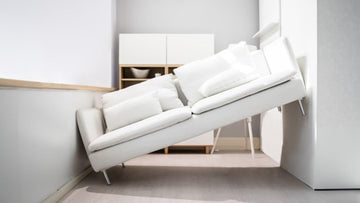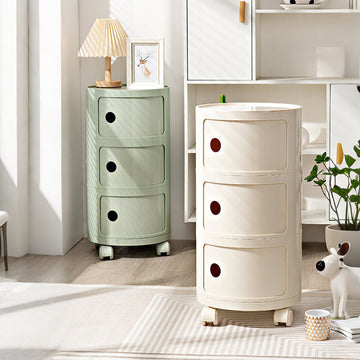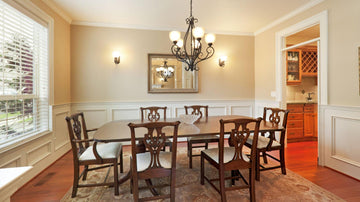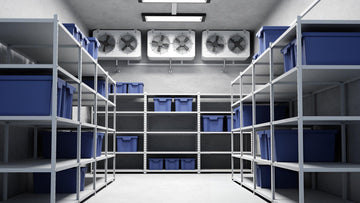Table of Contents
- Introduction
- Why Small Homes Push You to Rethink Furniture
- Furniture That Works Overtime (And Doesn’t Look Like It)
- What to Consider Before You Buy
- Styling Small Spaces, Room by Room
- Visual Tricks That Make Small Rooms Feel Bigger
- Don't Forget Maintenance
- Buying Smart: Budget Tips and Planning Advice
- Final Thoughts
If you’ve ever tried to unpack your life into a small apartment, you know the feeling: no matter how neatly you fold things or how many times you rearrange the furniture, there’s never quite enough room.
I moved into a 40-square-meter apartment a few years ago. At first, I thought I just needed to declutter. But pretty quickly, I realized that wasn’t the full story. The problem wasn’t how much I had—it was that my furniture was lazy. It looked good, sure, but it wasn’t helping me.
That’s when I started paying attention to furniture that could do more than one job. These weren’t futuristic Transformer-style pieces, but thoughtful, well-designed items that gave me options—storage, flexibility, and a chance to breathe in my own home.
If you’re in a similar situation, here’s everything I’ve learned about multifunctional furniture, and why it’s become my favorite investment in small-space living.

Why Small Homes Push You to Rethink Furniture
The Truth About City Living
City apartments are small. That’s not news. But I think what surprises people is how quickly they fill up—even when you’re careful. A bed, a table, some shelves, a couple of chairs… and suddenly your “cozy studio” feels more like a storage closet with a window.
And the clutter? It doesn’t always look like a mess. Sometimes, it’s just that lingering feeling that you have no place to put anything.
I’ve been there. My books had no home. My winter coats were stuffed under the bed. And every flat surface became a drop zone for keys, cords, and half-finished mugs of tea.
When Traditional Furniture Doesn’t Help
My first instinct was to buy more storage—get a bigger dresser, maybe a wardrobe. But all that did was eat up floor space. I was solving one problem by creating another.
That’s when I started looking for furniture that didn’t just sit there looking pretty—it needed to earn its spot.

Furniture That Works Overtime (And Doesn’t Look Like It)
You’ve probably seen those “hidden storage” hacks online that look great in theory but feel clunky in real life. I’ve tried a few of those. What I’ve found is that the best multifunctional furniture blends in. It doesn’t scream “I’m secretly a box!”—it just fits your life.
Here are some types that have made a real difference in mine.
Storage Ottomans and Side Benches
I bought a cube-shaped ottoman on a whim one weekend. It matched my rug, had a decent cushion, and didn’t take up much space. Turns out, it was the most useful item in my living room.
Inside? I keep spare blankets, board games, and yes, those cords I never seem to organize. It doubles as a footrest and a seat when friends come over.
Some friends use theirs as bedsideテーブル. The key is choosing one with solid construction—you want it to hold real weight and open smoothly.
Folding Tables and Compact Desks
Working from home in a small apartment means your workspace has to be adaptable. I started with a fold-down wall-mounted desk. When it’s up, it looks like a slim panel. When it’s down, it’s where I work, write, eat, and sometimes fold laundry.
Same goes for folding chairs and stools. I keep two tucked under the bed. They’re sturdy, neutral in color, and come out whenever I host guests.
The best part? They don’t take over the room when not in use.
Rolling Carts and Vertical Storage
One of my favorite purchases was a three-tier rolling cart. I originally bought it for kitchen overflow, but now I use it in the hallway to hold everything from keys and mail to extra toiletries.
I’ve also mounted shelves above doorways and installed narrow vertical racks in corners. These areas are usually wasted—but with a bit of planning, they become incredibly useful.
Under-Bed and Bedside Storage
Let’s be honest: the space under your bed is too valuable to waste. I use soft-sided storage bins with handles, where I stash off-season clothes and extra bedding.
For bedside storage, I swapped out my old table for a small unit with wheels and drawers. It holds way more than it looks like it should. Plus, I can move it around if I need to reconfigure the space.

What to Consider Before You Buy
Multifunctional furniture is an investment. And like any investment, it pays to think before you swipe your card.
① Measure Your Space (Twice)
That amazing lifting coffee table? It might not fit once it’s fully extended. Always check:
-
Dimensions in use and at rest
-
Walking clearance around the item
-
Door swing, drawer extension, etc.
I once bought a sofa that technically “fit” my living room, but I could no longer open the closet door fully. Learn from my mistake.
② Check the Materials and Build Quality
If a piece is doing double duty, it’s going to get more use—and more wear. Look for:
-
Solid wood or metal frames
-
Smooth hinges and drawer slides
-
Good fabric stitching or wipe-clean surfaces
Flimsy MDF might be fine for a decorative shelf, but not for an everyday bench or table.
③ Prioritize Ease of Use
If it takes too much effort to open or adjust, you won’t use it. Try to test the item in-store if you can. And read reviews carefully—especially about folding mechanisms, drawer tracks, or anything involving wheels.
Bonus tip: think about everyone in your home. Can your kid open that drawer? Can an older relative safely move that folding chair?
④ Match (or Complement) Your Existing Style
Function is key, but aesthetics matter too. A sleek black metal shelf might be practical, but if your home’s theme is light woods and neutrals, it might stick out.
I tend to stick with soft whites, beiges, and greys. They make the room feel lighter and more open. Some brands, like SSL Furniture, offer a wide range of color options so you can pick something that works with your vibe—not against it.

Styling Small Spaces, Room by Room
Living Room
-
A lift-top coffee table hides remotes and chargers
-
A cube ottoman holds throw blankets and doubles as a seat
-
A wall-mounted shelf above the TV holds books and small plants
-
A rolling cart tucked beside the sofa serves as a side table and snack station
Dining Area
-
I use a drop-leaf dining table that folds down when not in use
-
My dining chairs are stackable and stored in a hallway niche
-
A slim sideboard with drawers stores dishes and functions as extra counter space when cooking
Bedroom
-
Under-bed bins hold seasonal clothing
-
A folding desk hangs on the wall beside the wardrobe
-
A tall, narrow bookshelf doubles as a nightstand and storage tower
Entryway / Hall
-
Wall hooks hold jackets and bags
-
A slim shoe cabinet fits behind the front door
-
A small console table has drawers for keys, masks, and mail

Visual Tricks That Make Small Rooms Feel Bigger
Use Light Colors
Pale tones reflect more light and make a space feel open. I lean toward white, light oak, and soft grey for furniture. Dark pieces can look beautiful but tend to “close in” a room unless used carefully.
Keep a Consistent Color Palette
Too many colors can make a space feel chaotic. I use similar tones across furniture and textiles, with just one or two accent colors for pillows or art.
Go Transparent (When It Makes Sense)
I’ve used clear acrylic shelves and glass tabletops in tight spots—they visually disappear, which helps the room breathe. Just be careful not to overdo it. A room full of glass can feel cold.
Don't Forget Maintenance
Multifunctional furniture works harder—so it needs a bit more care.
-
Wipe surfaces regularly to avoid buildup
-
Check hinges and sliders every few months
-
Oil or tighten screws if needed
-
Don’t overload storage benches or drawers beyond their limit
I once cracked the bottom of a storage ottoman by stuffing too many books in it. Lesson learned.
Buying Smart: Budget Tips and Planning Advice
Think Beyond the Price Tag
Sure, a multifunctional piece might cost more upfront. But if it replaces two or three other items, it’s often the better deal.
I bought a bed with drawers underneath. It cost more than a basic frame, but I no longer needed a separate dresser. That’s space—and money—saved.
Buy in Stages
You don’t have to buy everything at once. Start with the pieces that solve your biggest problems. For me, it was a folding table and a storage bench. A year later, I added a vertical shelving system.
This approach helped me figure out what I really needed, and gave me time to save up for better-quality items.
Choose Reliable Brands
You don't have to go luxury, but you also shouldn’t settle for the cheapest thing on the market. Brands like SSL Furniture tend to offer a good balance between design, durability, and price—especially if you want pieces that actually last.
Final Thoughts
Small homes can be frustrating, but they also push you to be thoughtful—about what you own, how you live, and what matters most.
Multifunctional furniture isn’t just a clever trick. It’s a way to make your space work with you, not against you.








